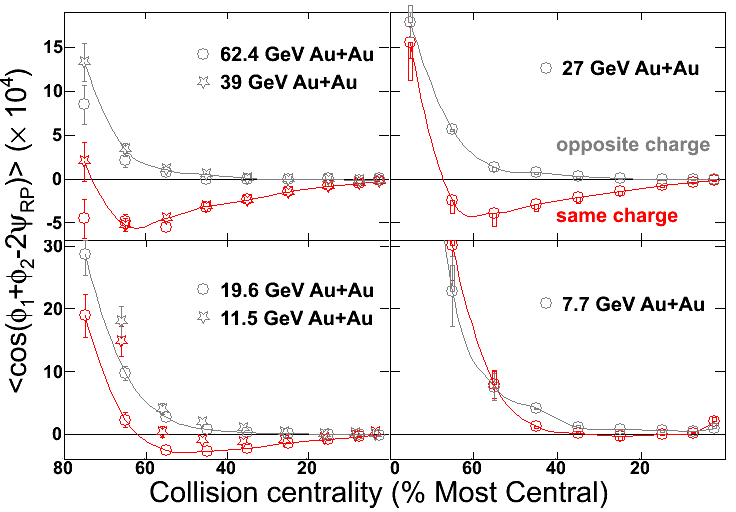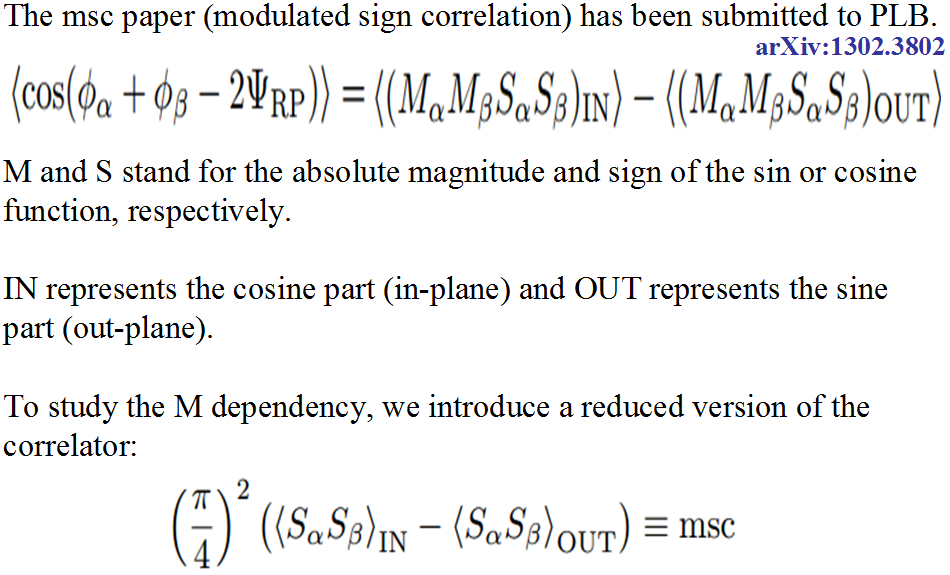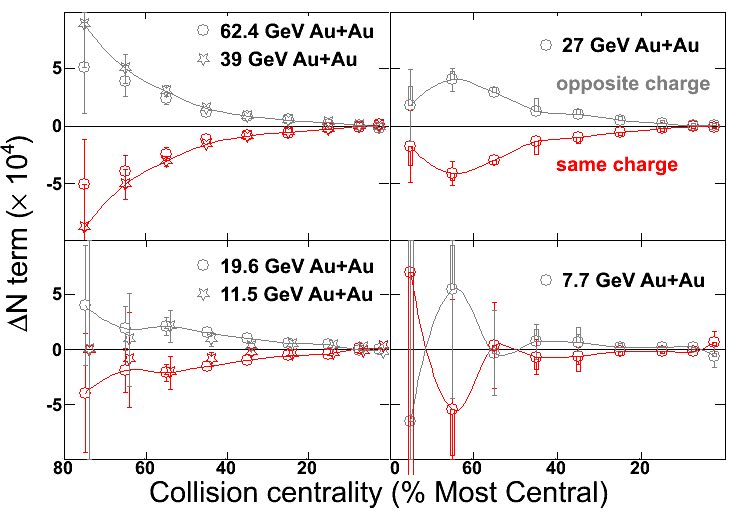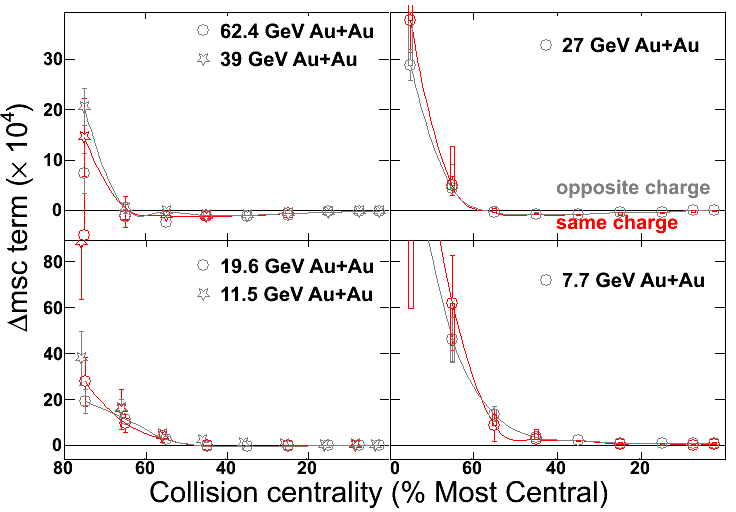Paper proposal: LPV@BES
Title: Fluctuations of charge separation perpendicular to the reaction plane and local parity violation in Au+Au collisions at √sNN = 7.7 - 62.4 GeV
PAs: Vitaly Okorokov and Gang Wang
Target journal: Phys. Rev. Lett.
Abstract: Local parity-odd domains are theorized to form inside the Quark-Gluon-Plasma (QGP) produced in high energy heavy ion collisions, and to manifest themselves in charge separation perpendicular to the reaction plane via the Chiral Magnetic Effect. Based on the approaches from previous STAR analyses of 200 GeV Au+Au collisions, we further this study into lower collision energies at √sNN = 7.7 - 62.4 GeV. The signal gradually decreases with decreased beam energy, and tends to disappear around 7.7 GeV. The beam-energy dependency of the P-even background is also discussed.
Introduction:

Results:

Fig.1: The three-point correlator as a function of centrality for different beam energies. The systematic errors on the two right panels are obtained with the condition of dpT > 0.15 GeV/c to suppress HBT+Coulomb effects.
Discussion 1: In most beam energies, the difference between OS and SS is clearly seen, with the same ordering as 200 GeV. In peripheral collisions, both OS and SS tend to go up, and the tendency becomes more prominent with decreased beam energy.
.gif)
Fig.2: The three-point correlator as a function of beam energy for 30-60% Au+Au collisions. The systematic errors are obtained with the condition of dpT > 0.15 GeV/c to suppress HBT+Coulomb effects.
Discussion 2: The difference between OS and SS remains roughly the same between 200 GeV and 19.6 GeV, and decreases when the beam energy goes beyond this region.

.png)

Fig.3: The dN term of the modulated sign correlation(msc). The systematic errors on the two right panels are obtained via the eta-sub method with eta gap of 0.1 to suppress short range correlations.
Discussion 3: The dN term is another way to look at the signal, where the OS and SS are approximately symmetric around zero by construction. The open angle at 62.4 GeV gradually closes up toward 7.7 GeV.

Fig.4: The dmsc term of the modulated sign correlation(msc). The systematic errors on the two right panels are obtained via the eta-sub method with eta gap of 0.1 to suppress short range correlations.
Discussion 4: The dmsc terms contains P-even background only, as supported by the fact that OS and SS are the same in most cases. The turning-up at peripheral collisions is presumably due to the momentum conservation.

Fig.5: The dmsc term of the modulated sign correlation(msc) as a function of RefMult. The eta-sub method was used, with an eta gap of 0.1.
Discussion 5: For peripheral collisions, the P-even bg in the dmsc term roughly scales with multiplicity, probably due to the conservation of momentum.
Conclusions: A three-point correlation between two charged particles and the reaction plane has been carried out for Au+Au collisions at √sNN = 7.7 - 62.4 GeV. The difference between the same charge and opposite charge correlations seems to decrease systematically with decreased beam energy at RHIC, which is also supported by the dN term of a modified correlator. This is coherent with the picture of local parity violation and chiral magnetic effect when the hadronic phase plays an increased role. The dmsc term of the modified correlator contains only the P-even background, and shows a feature presumably due to the momentum conservation.
To-do list:
- Further study of the scaling feature for the dmsc terms
- Paper draft and analysis note
- More details like differential measurements to be included in a longer paper
Links to previous papers:
- Azimuthal Charged-Particle Correlations and Possible Local Strong Parity Violation
- Observation of charge-dependent azimuthal correlations and possible local strong parity violation in heavy ion collisions
- Fluctuations of charge separation perpendicular to the event plane and local parity violation in $\sqrt{s_{NN}}=200$ GeV Au+Au collisions at RHIC
Links to previous talks:
- rexwg's blog
- Login or register to post comments
